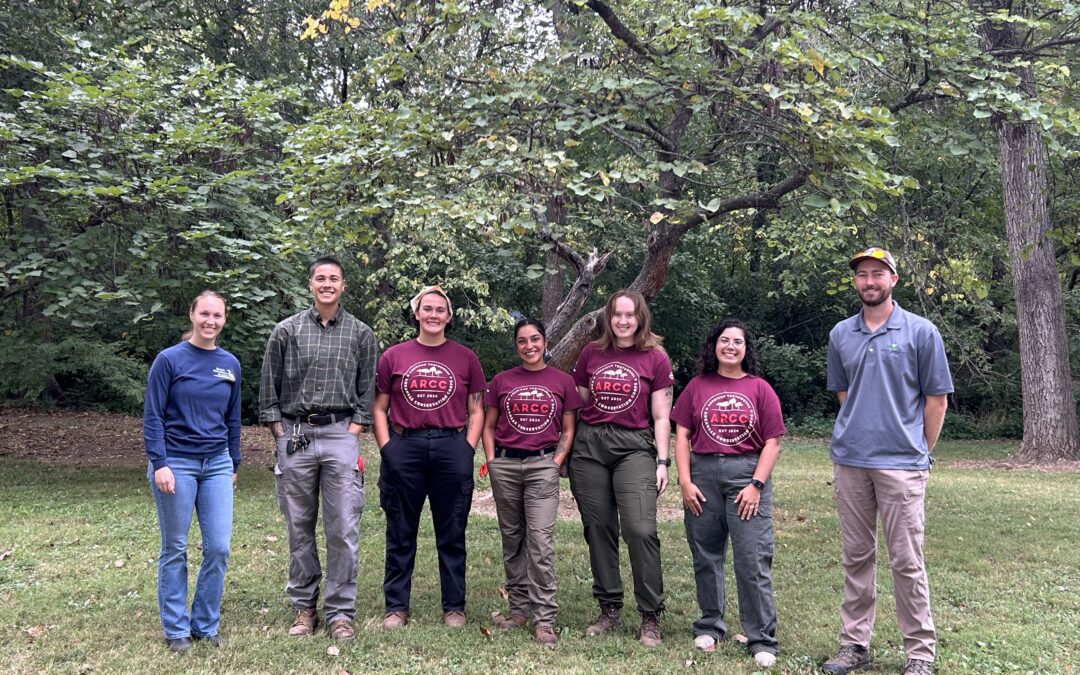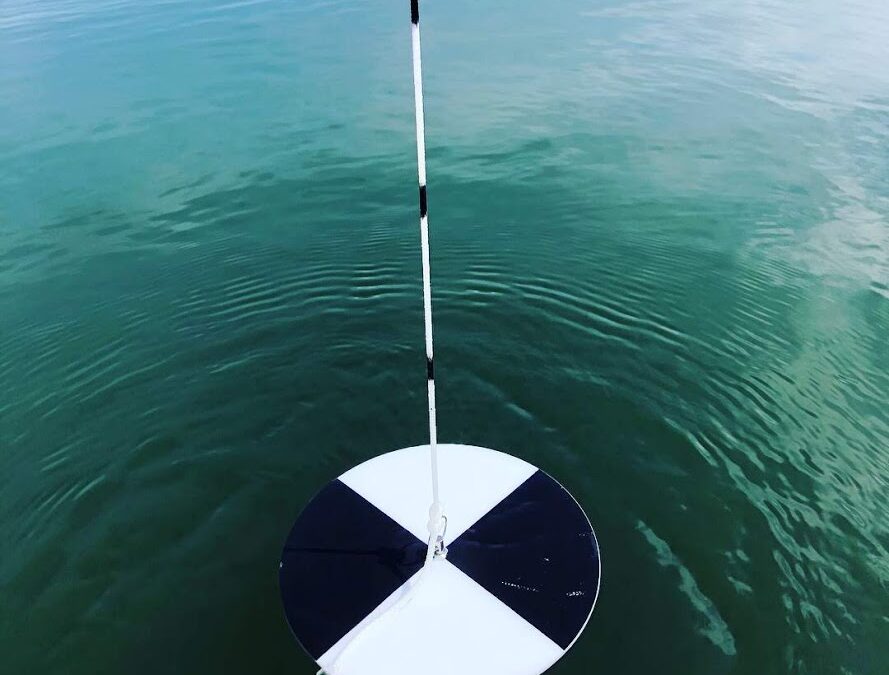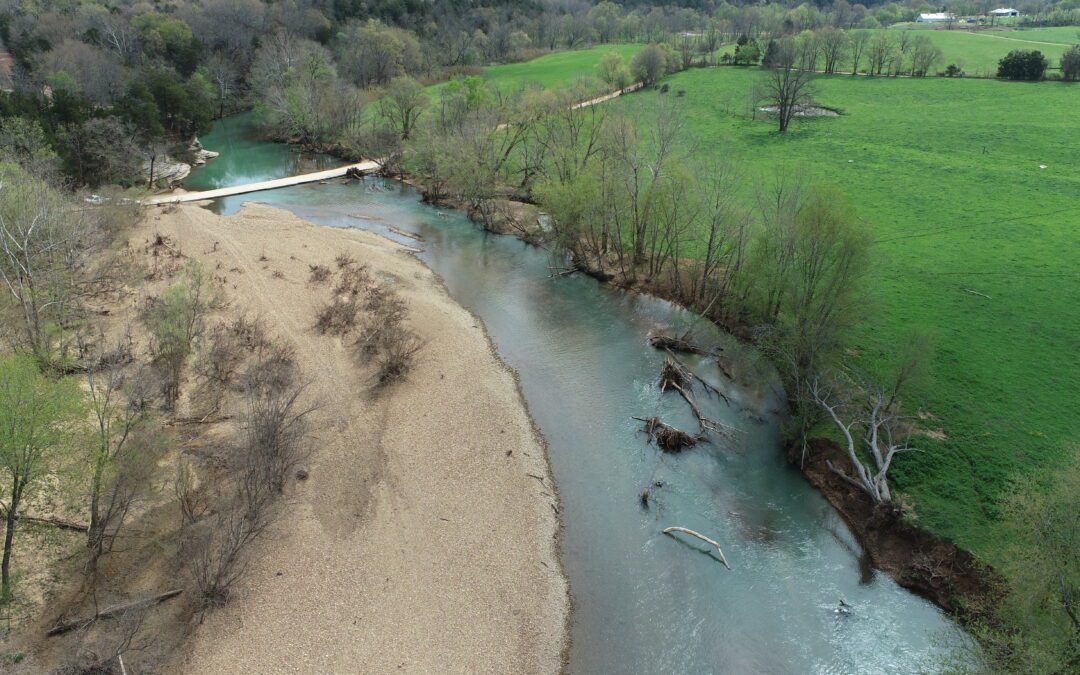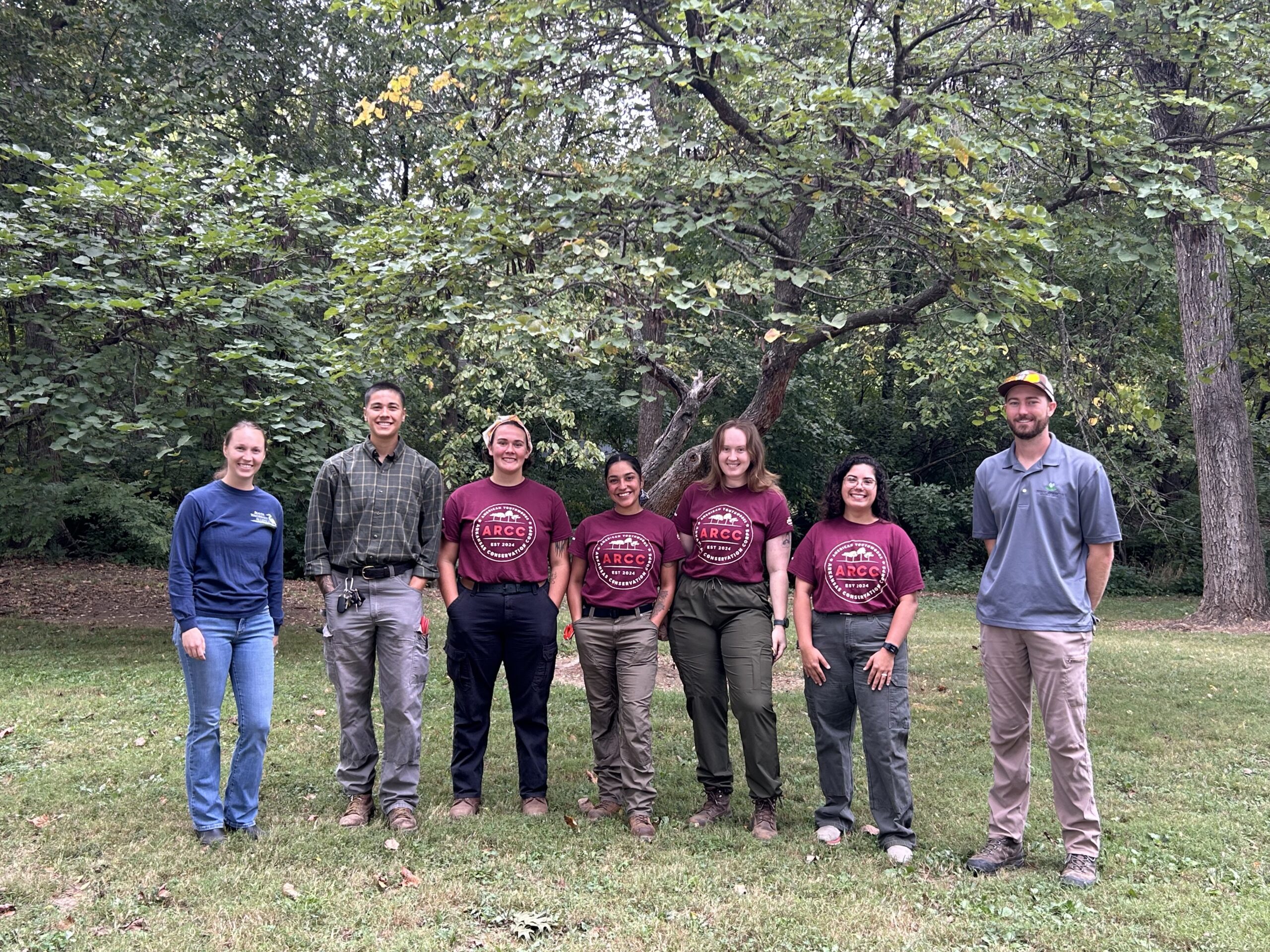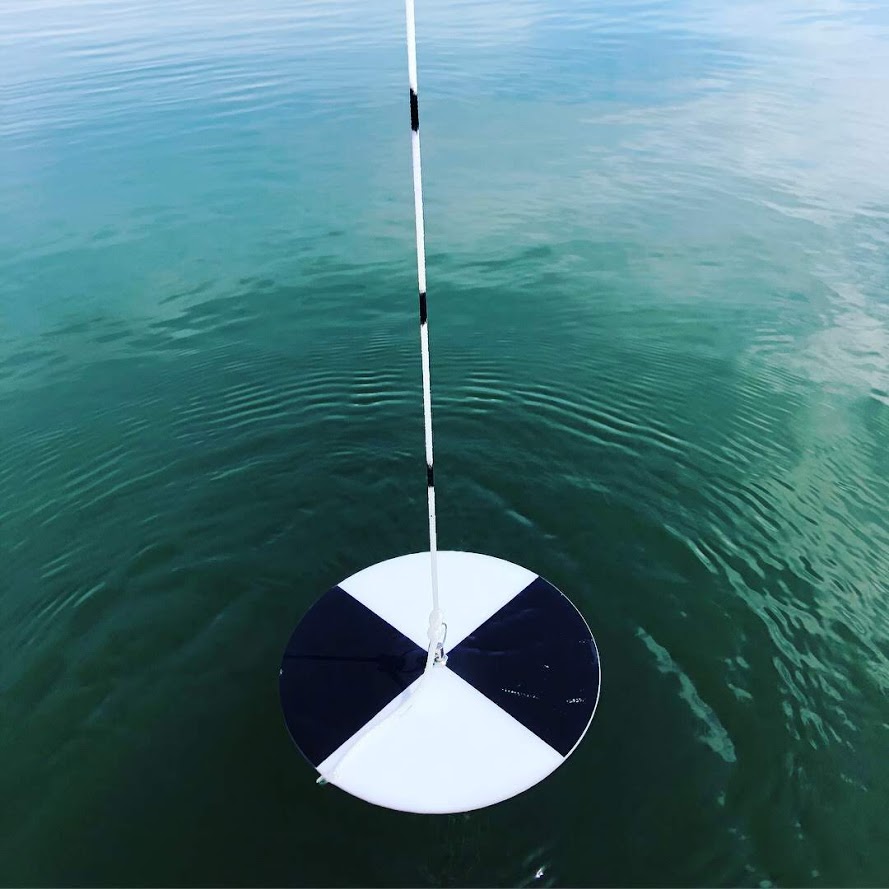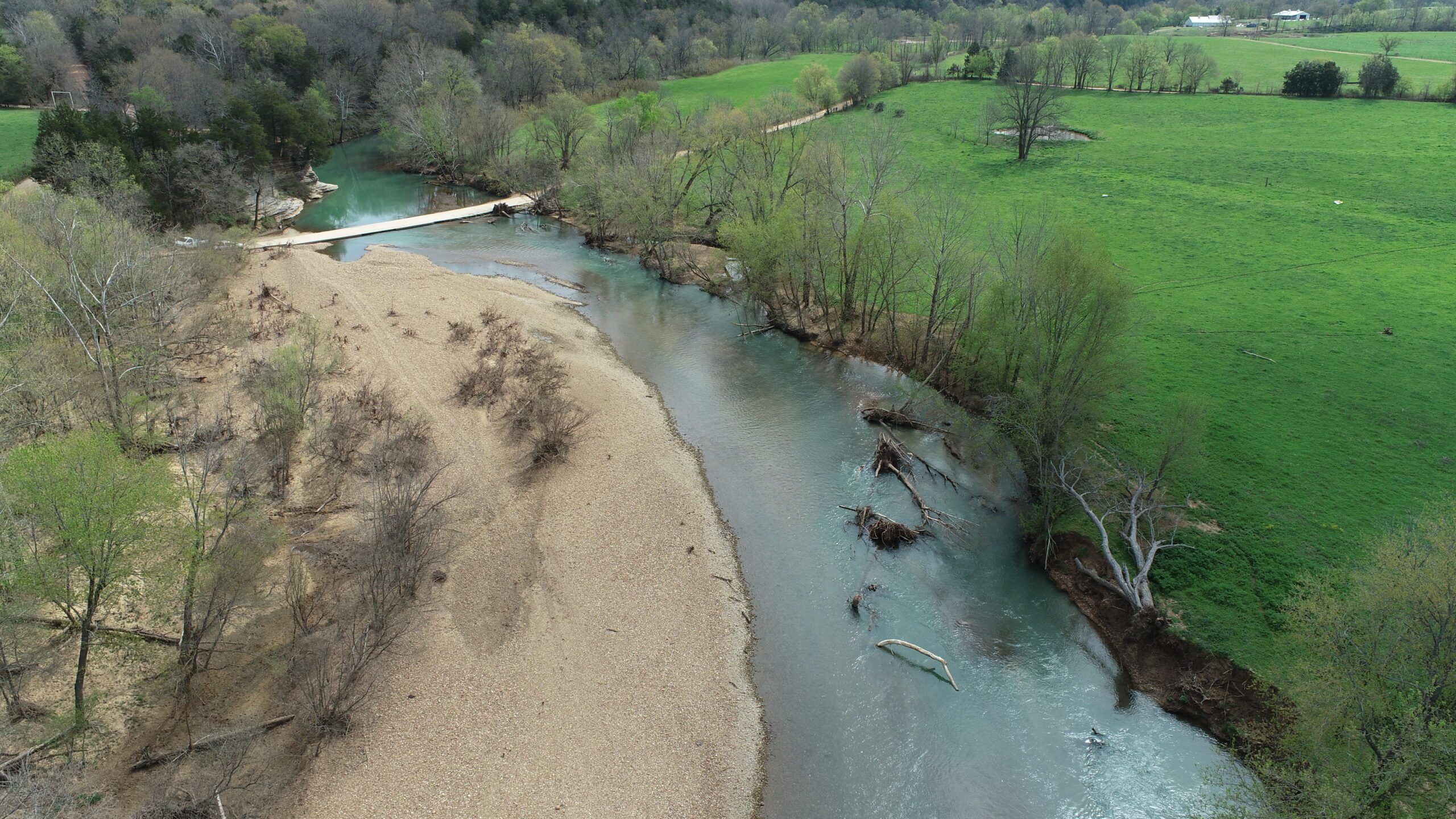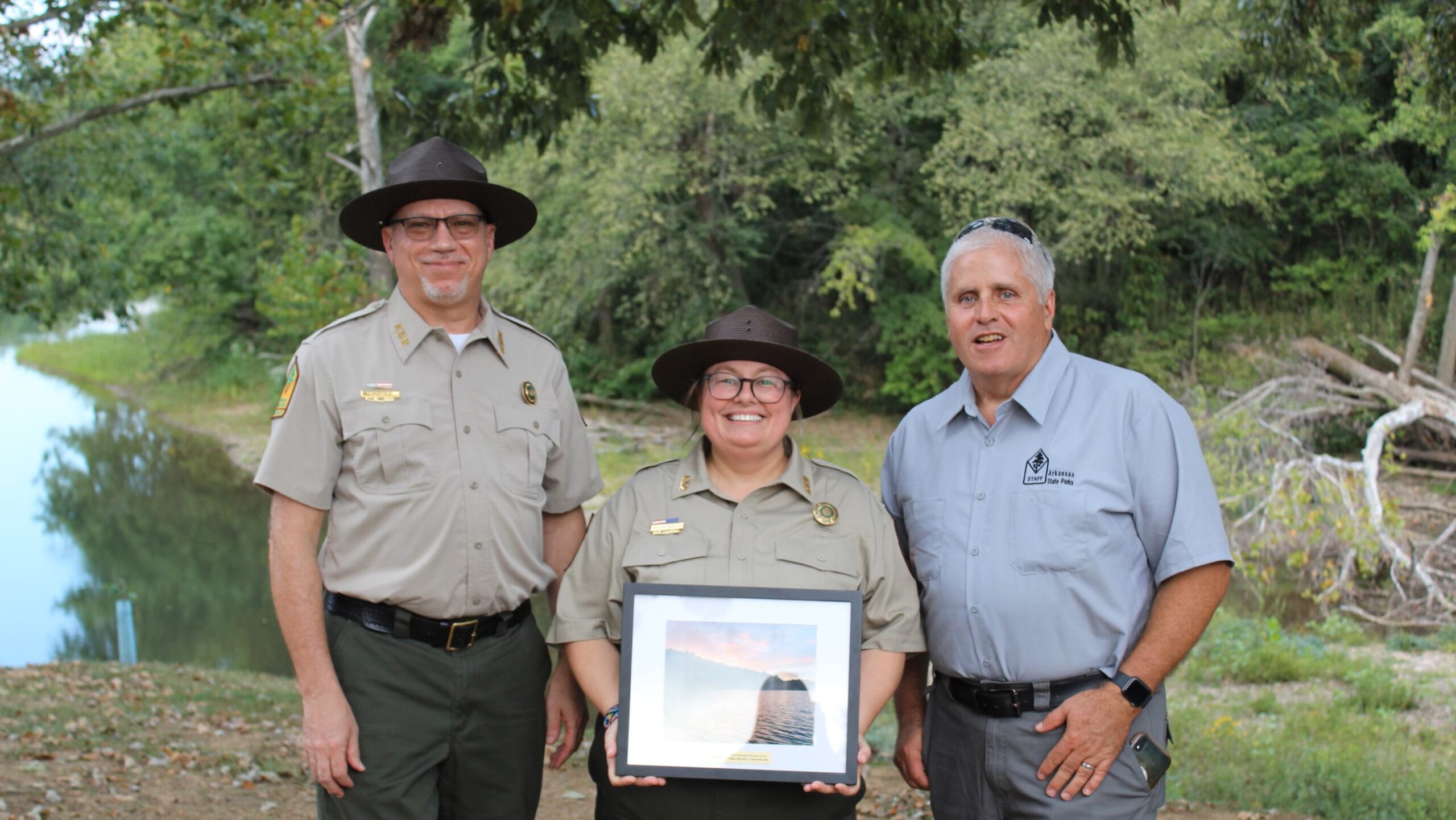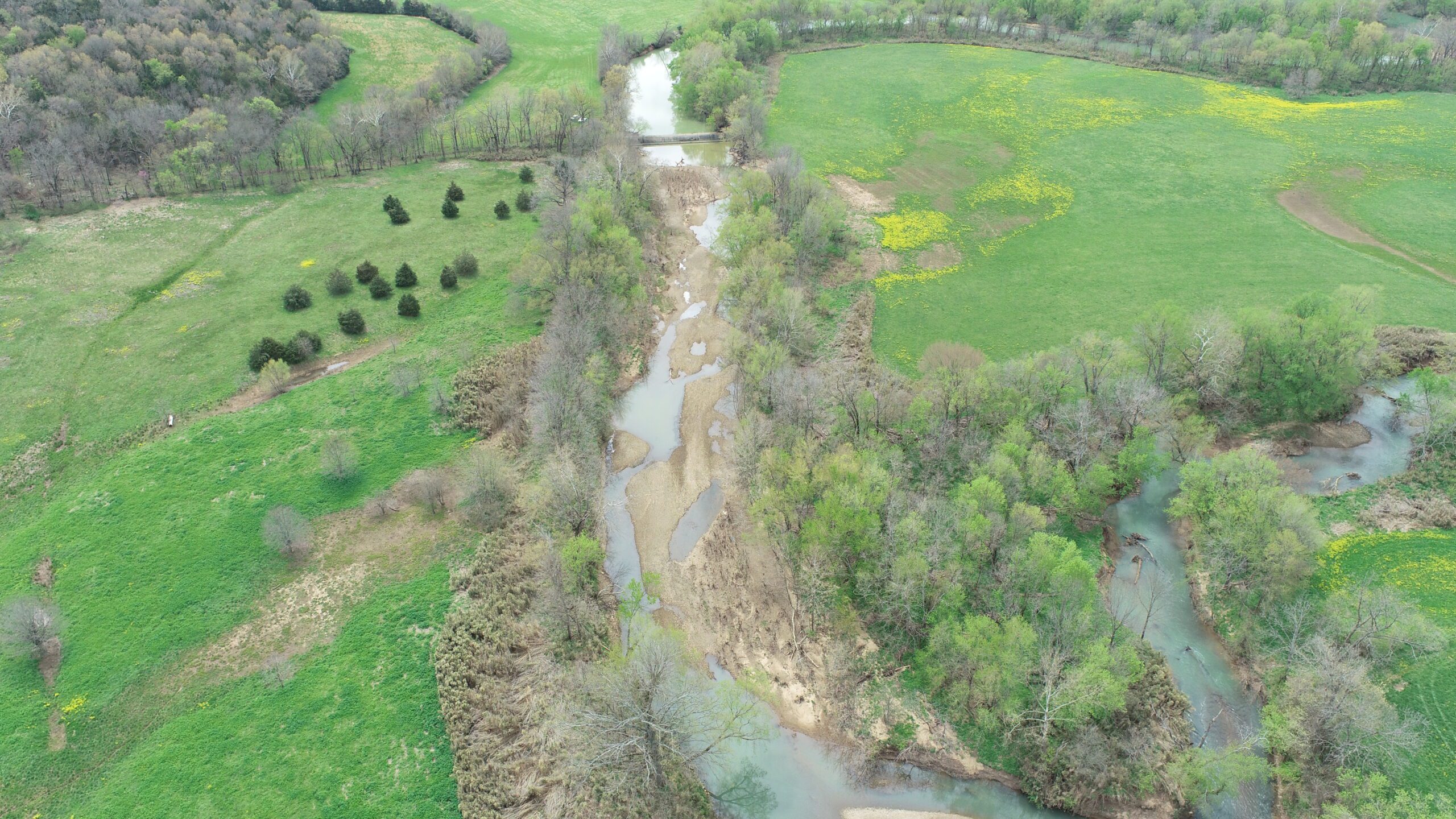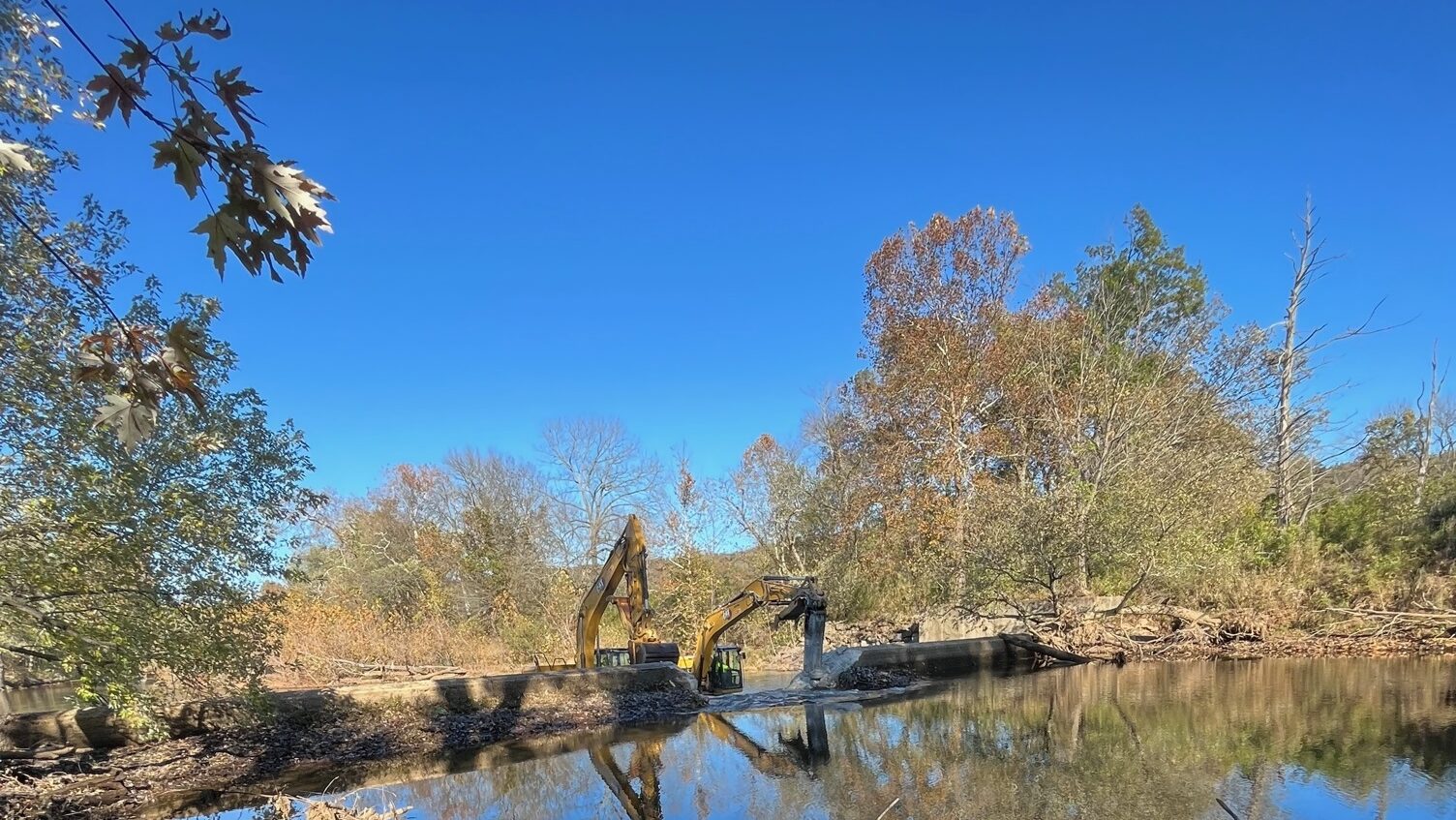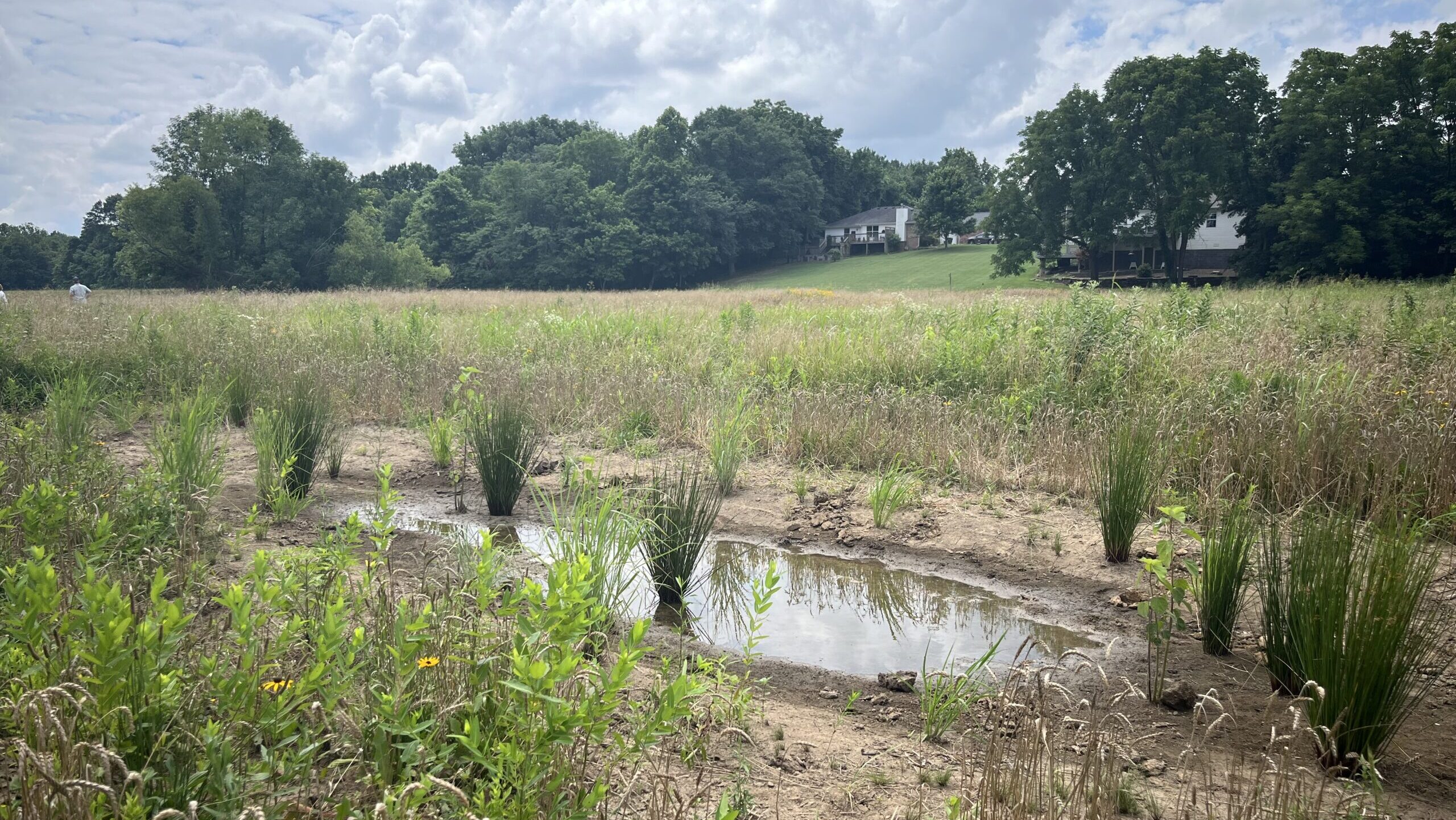Dear Beaver Lake Watershed Landowner,
After a hot and dry summer, the Alliance is excited to see more rainy days as we slowly transition into the fall season. With more rain on the way, and natural systems preparing to go dormant, now is a good time to think
about fall conservation planning for our properties.
In this issue, we share a low-tech, easy solution to reduce erosion using simple materials you may have on your land. We recently piloted this low-tech approach, and we are pleased with the results! We’re also excited to share with you on ways that Beaver Lake watershed landowners can play a part in restoring and protecting rare habitats like prairies- of which only 1% remain in the state. Many landowners hold the key to restoring remnants that lie on their property, and the Alliance can help with technical support in achieving these restorations. The Arkansas Conservation Practices Highlight story shares more.
This summer brought on difficult times for local producers in Northwest Arkansas, with droughts reaching across the state. In this newsletter, you can read about ways to beat the drought through soil health practices and learn about agricultural methods that are easy to adopt, can keep money in your pocket, and protect the health of your soil. We also share exciting work continuing in and around Beaver Lake, thanks to great partners, amazing landowners, and dedicated volunteers!
Lastly, we would like to sincerely invite you to our 2022 Annual Friendraiser coming up in September. The Friendraiser is a fun-filled event to gather with our friends and partners like you, as well as raise funds for another great year of source water protection. We hope to see old and new friends during this evening by the White River in Elkins. More details inside.
Sincerely,
the Alliance Team
EROSION CONTROL AT EAST MOUNTAIN CEMETERY
Protecting Important Cultural History with Erosion Control
In July of 2022, the Alliance partnered with a group of AmeriCorps volunteers to take on a very important project on Mount Sequoyah, formerly known as “East Mountain,” in Fayetteville. This property, called East Mountain Cemetery, is tucked away on the mountain and dates back to the 1800s and contains the graves of dozens of enslaved African Americans. Thanks to the incredible work by the Northwest Arkansas African American Heritage Association, this cemetery is being restored to preserve and document the history found in this special place. Some of the grave sites are marked with headstones, some with rough stone markers, and many are not marked at all.
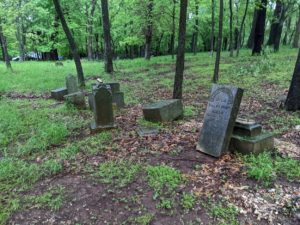

Above: Some of the few headstones that exist within the cemetery.
After continuous heavy rains, this important cultural memorial space was facing degradation from heavy erosion caused by stormwater coming from off the mountain. Rivets in the soil were beginning to form, threatening the integrity of the cemetery, whose restoration had only recently begun. Because of the delicate nature of this historic site and many gravesite locations remaining unmarked, conventional erosion control methods were out of the question. Using a practice called “Low-Tech Erosion Control”, the Alliance was able to assist the Northwest Arkansas African American Heritage Association with further protecting the cemetery from natural phenomena like heavy storm events.
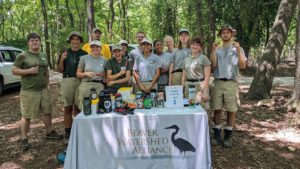
Above: Alliance staff and AmeriCorps volunteers. Thank you to these great volunteers!
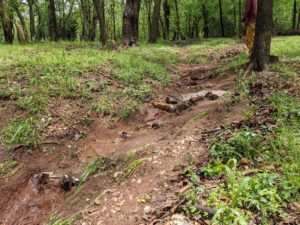
Above: One of the gullies during a rain event. Below: (Left) Alliance staff & volunteers
installing a structures. (Right) A structure using honeysuckle removed from the site.

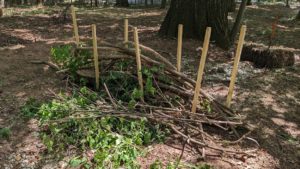
Low-Tech Erosion Control uses natural materials, often found on site, to create structures that slow down and spread out stormwater flow to prevent heavy soil loss. With the help of an AmeriCorps group that has been stationed at the Mount Sequoyah Center, twelve of these erosion-control structures were constructed and woven throughout the cemetery. By using materials found on site like the woody branches of invasive bush honeysuckle, this project not only created erosion prevention structures but also removed a large amount of invasive species that choke out native and ecologically important plant life.
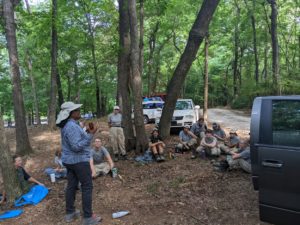
Above: Sharon Killian, NWA African American Heritage Association board president,
speaking to volunteers about the cemetery.
The Alliance was thrilled to be able to assist with the great work being done by the Northwest Arkansas African American Heritage Association on this site and is so excited to see continued conservation efforts in the future. If you would like to learn more about the African American Heritage Association, please visit their Facebook page at Facebook.com/NWABlackHeritage
ARKANSAS CONSERVATION PRACTICES HIGHLIGHT
Restoring Rare and Declining Communities
Did you know the Natural State is home to over two hundred and fifty uniquely distinct natural communities?! Many of these communities can be grouped into broadleaf and coniferous forests or woodlands, prairies, grasslands and shrublands, glades, barrens, and scours, marshes, bogs, and swamps, fens, seeps, and wet meadows, cliffs, riparian, and aquatic. Some communities like prairies, glades, barrens, woodlands, wetlands, and grasslands have rapidly disappeared due to land-use changes or changes to their historic disturbance cycles, such as the clearing of land, the suppression of natural fires, or competition from exotic invasive species. Many of these communities are in steep decline with some, like prairies, being less than one percent of their historic population. However, there is hope for restoring these beautiful and abundant habitats with help from landowners willing to implement conservation and management efforts on their land.
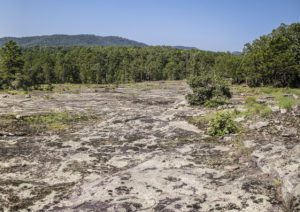
Above: A glade before fire & land management. Below: A glade after fire & land management. Photo credits: NRCS / USDA
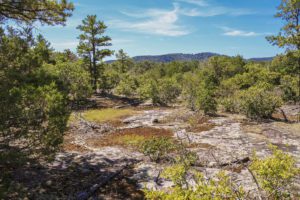
The Beaver Watershed Alliance (Alliance) is a Technical Service Provider for many USDA NRCS practices and offers free assistance to landowners in the Beaver Lake watershed who are interested in planning and applying for land management cost-share projects. We’re excited to highlight this important cost-share measure under the USDA Conservation Technical Assistance Program – Practice #643: Restoring Rare and Declining Communities.
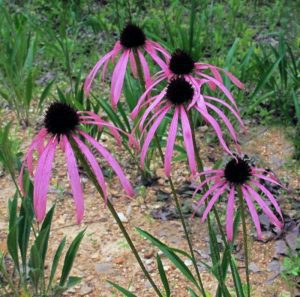
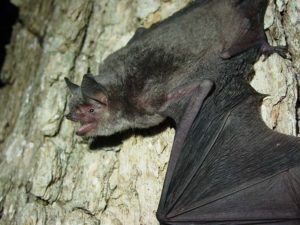
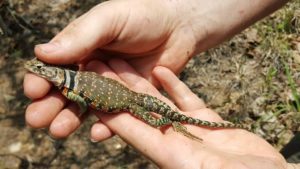
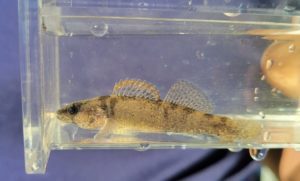
Above: Species found in Arkansas that rely on these rare and declining communities
mentioned in the article. (Top Left) Glade coneflower (Echinacea simulata), a rare
flower that relies on healthy glade habitats to grow. Photo credit: Craig Fraiser / ANHC
(Top Right) An endangered Gray Bat (Myotis grisescens) that can be found near the
War Eagle in Arkansas. Photo credit: USFWS, Adam Mann (Bottom Left) A collared
lizard (Crotaphytus collaris) that historically occupied open rocky glades. Photo
credit: Nate Weston, Beaver Watershed Alliance (Bottom Right) An Autumn darter
(Etheostoma autumnale). Photo credit: iNaturalist
Some of the conservation measures you can implement under the “Restoring Rare and Declining Communities” include:
• Treatment of sheet, rill, or gully erosion
• Treatment of erosion and incision on headwater
(wadable) streams
• Removing invasive species from prairies, grasslands,
glades, or barrens
• Improving wildlife habitat along headwater streams,
fencerows, or shrublands
• Improving wildlife habitat for fire-dependent species
through prescribed burning
Management activities such as haying, grazing, prescribed burning, forest stand improvement, or any others should be planned to achieve and maintain the practice’s success.
Contact the Alliance at 479-750-8007 orinfo@beaverwatershedalliance.org for more info.
SOIL HEALTH & DROUGHT IN ARKANSAS
Although many people would think much of the work of the Beaver Watershed Alliance focuses solely on water, it might surprise you to know that soil plays a huge part in the watershed health. Healthy soils that are not compacted, can soak in much more rainfall and reduce rain runoff, especially from pastured lands. Building soil health through rotational grazing can also alleviate drought issues.
Compared to continuous grazing, rotational grazing involves moving livestock through several smaller pastures, with one pasture being grazed at a time, therefore provides time for defoliated grasses to recover and increases efficiency in grassland utilization. When the grazing area is divided into multiple pasture per herd, the grazing period will be shorter while recovery period for each pasture will be longer, thereby potentially allowing for greater stocking capacity and increased profitability.
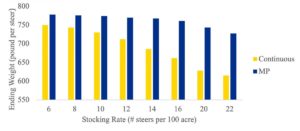
Above: Steer ending weight comparison between continuous and MP grazing. Wang et al (2018)
The benefits of multi-paddock (MP) or rotational grazing are more obvious for drought years. It is also worth to note that even though rotational grazing allows for a much higher stocking rate, overgrazing is not an issue because grazing on one pasture only lasts for very short periods followed by adequate time for recovery before re-grazing. As a result, animal production per acre can significantly increase.
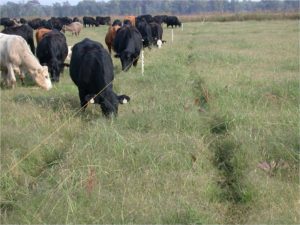
Above: Controlled Grazing with electric fence improves forage utilization. The first steps to 300 Day Grazing management. Photo credit: UA Extension Services
Local partners such as the University of Arkansas – Division of Agriculture Research and Extension, Conservation Districts, USDA NRCS, and National Center for Appropriate Technology are located in NWA and have experts on staff to assist in guidance to improve soil health and improve drought resistance on your pastures. Special financial assistance is available to landowners in the Brush Creek or Roberts Creek watersheds. Contact the Alliance to see if you qualify.
“Soil Health and the Future of Farming: Farmers across the country are operating in an era of uncertain weather and uncertain markets. Many farmers have reduced their input costs and increased their bottom lines by choosing to invest in soil health, just as they would in new machinery and maintaining farm structures. Healthy, living soils can better sustain the increased demands we’re placing on them to grow healthy food and maintain clean water and air. It is important to build and maintain soil health before drought or flood conditions appear. Healthy soils can better withstand climatic stresses of drought and floods and, in some cases, can help mitigate these stresses. All this requires an increased understanding about how to manage the soil as an ecology. Investments, such as adding organic amendments, practicing no- or reduced tillage, leaving crop residue, planting cover crops, and diverse crop rotations, will help the soil efficiently cycle both water and nutrients, sustain plant and animal productivity, and maintain or improve water quality. The return on soil health investments will pay off year after year after year.”
– Managing Soils for Water: How Five Principles of Soil Health Support Water Infiltration and Storage, by Martin Guerena and Rex Dufour, NCAT Agriculture Specialists, ATTRA Sustainable Agriculture (a program of the National Center for Appropriate Technology)
YOU’RE INVITED TO THE ALLIANCE FRIENDRAISER!

The Beaver Watershed Alliance is extending an invitation to landowners and partners to the Alliance Friendraiser. Each year, the Alliance hosts an annual Friendraiser to celebrate another year of successful watershed protection. It is the relationships and partnerships among agencies, organizations, landowners, and other perspectives that help put funding on the ground to restore, protect and enhance the Beaver Lake watershed. We want to celebrate YOU and your efforts that make NWA a great place to live, farm, work, and play.
Please join us Thursday, September 22nd from 6:00 – 8:30 pm at Bunch Park in Elkins for this year’s Friendraiser: “Party in the Park”. We’ll have a BBQ dinner, a live band, family friendly yard games, a silent auction & raffle, and landowner & partner awards. Ticket prices will be $10 for an individual, or $20 for a family.
ONLINE TICKET SALES CLOSE FRIDAY, SEPTEMBER 16TH.
Visit beaverwatershedalliance.org/event/friendraiser/ email info@beaverwatershedalliance.org , or text/ call 479-750-8007 to purchase a ticket before Friday, September 16th to reserve your spot!
HABITAT IMPROVEMENTS ON BEAVER LAKE
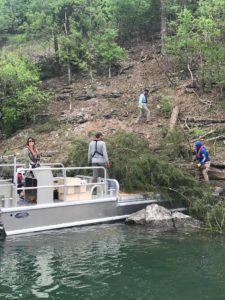
As part of a grant award from the Reservoir Fisheries Habitat Partnership, the Alliance and Arkansas Game and Fish Commission (AGFC) have been working together to improve habitat conditions around Beaver Lake. AGFC led a group of volunteers to clear and sink invasive cedar trees from wildlife management areas around Hobbs State Park. This will improve the understory habitat for the glade landscapes that hug the shorelines of Beaver Lake, as well as provide anglers new structures to catch bass. The Alliance utilized funding to restore a 300′ stretch of Clifty Creek, a major tributary to War Eagle Creek. Thanks to landowner partners, Mike and Sue Phillips, and program partners including AGFC Stream Team, Bass Pro Outdoor Fund, UA Extension Service, Cargill Cares, and Rufus Fund for the War Eagle, we were able to leverage funding to make the project a great success.
In addition, the AGFC and Alliance recently applied for additional funding from the National Fisheries Habitat Partnership, in partnership with Bass Pro Shops US Open grant, and were awarded $275,000 to continue this work. We appreciate this opportunity to work with great partners and amazing landowners and volunteers!
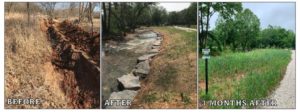
Above: Before and after photos of the Clifty Creek restoration. 300 linear feet of eroded streambank was restored to reduce sediment and nutrients into Beaver lake. 300 native trees, shrubs, and grasses were planted. This riparian buffer will protect water quality and provide wildlife habitat for many years to come.

